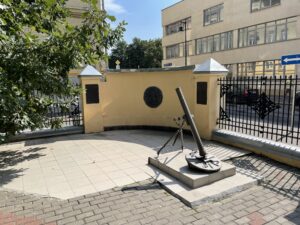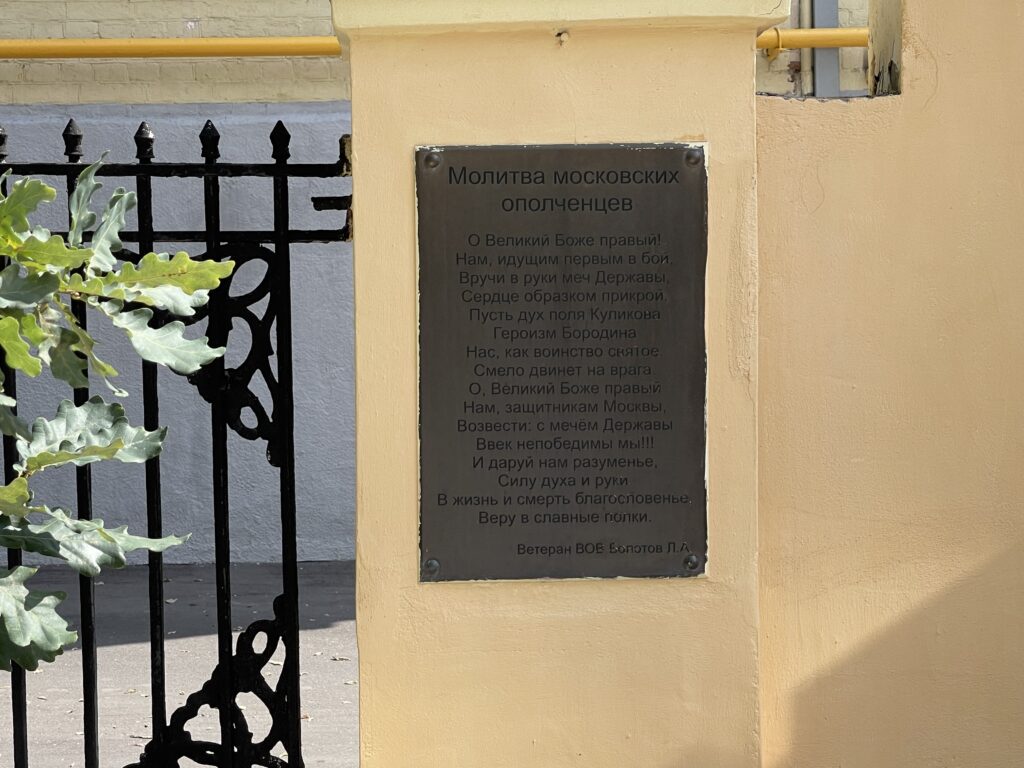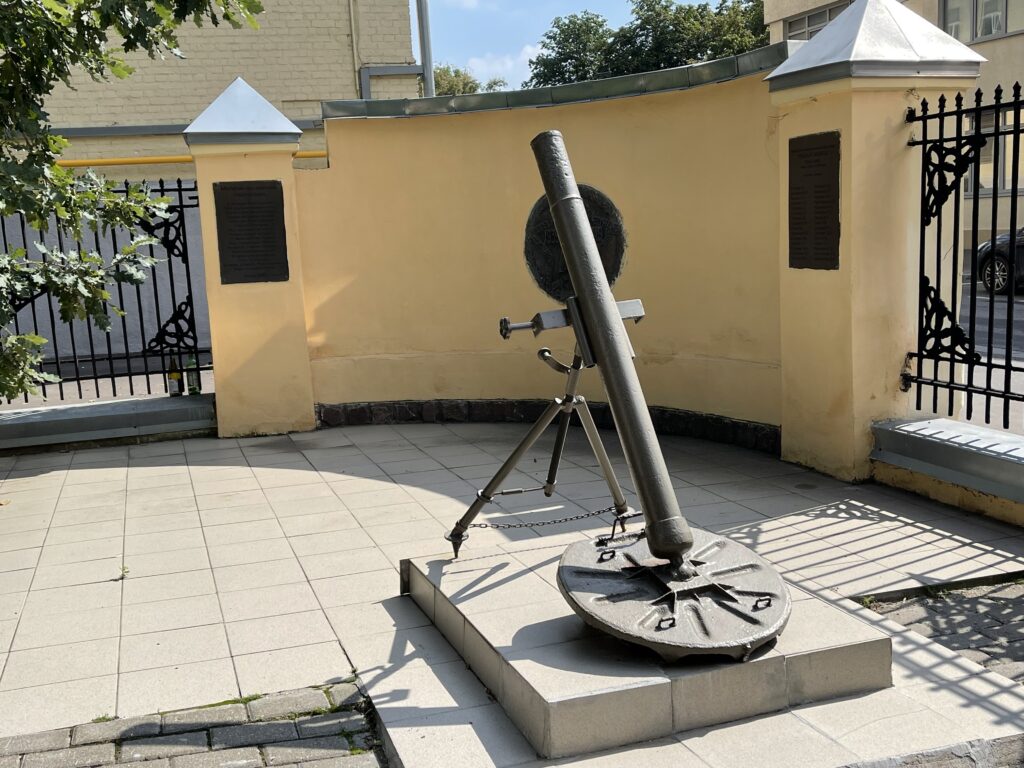«Living Memory» and «Prayer of the Moscow Militia» Memorial Complex

The museum «Behind Us is Russia, Moscow and the Arbat» was created in 2004 on the initiative of veterans of the Great Patriotic War – residents of the Arbat district and the director of the college N.M. Ermakova, Candidate of Pedagogical Sciences, Honoured Teacher of Russia. Part of the museum is the memorial complex «Living Memory». It was created in memory of those who defended Moscow and the Arbat. The basis of the museum’s collection consists of materials from the Family Chronicle of Victory: memories, personal belongings, war trophies, photographs of combatants, home front workers and those who were children during the war, relatives and close students and teachers. The first pages of the chronicle were written in 1995, since then six volumes have already been written about the tragic and heroic 1,418 days of the Great Patriotic War. Among the exhibits are personal belongings of the defenders of Moscow: a work book, letters, photographs of Zoya Denisovna Potapova, who from July 1943 to February 1945 drove shells to the front line, and after being seriously wounded at Lake Balaton was demobilized from the army; the overcoat of the commander of the tank unit Georgy Alexandrovich Sukhanov, as well as a tunic, honorary certificates and a photo at the walls of the Reichstag on May 9 of Major I.N. Sokolov of the sapper unit, who reached Berlin in 1945. The book “Komsomol of Lenin”, written by A.G. Sitnikov, a resident of the Arbat, and published in besieged Leningrad in 1943, occupies an honorable place in the exposition. Members of the 8th Moscow Rifle Division of the Krasnopresnenskiy District People’s Militia were among the defenders of Moscow. The 8th Moscow Rifle Division of the People’s Militia of the Krasnopresnenskiy district was formed from July 3 to July 6, 1941. The division included workers of the Trekhgornaya Manufactory and Proletarian Labour factories, metalworkers of the Krasnaya Presnya plant, workers of the varnish and paint factory, tram workers, students and teachers of Lomonosov Moscow State University, MGRI, the Tchaikovsky Conservatory, artists of the Revolution Theatre, writers (“Writers’ Company”), workers and employees of the Proletarsky district. In addition to Muscovites, volunteers from the Kolomna, Zagorsk, Solnechnogorsk, Voskresensk, Noginsk and Podolsk districts of the Moscow Region joined the division. By July 6, 1941, six thousand people were called up. The formation of the division took place in the buildings of the regional court and the Faculty of Law of Moscow State University (11, Herzen Street). The 1st Rifle Regiment was located in school № 83 (14, Strelbischensky Lane), school № 89 and school № 95 (37, Zamorenova str.) and clubs of the district. From July 9 to July 10, the regiments of the division left Moscow and settled in the area of Nikolo-Uryupin and Buzlanov. On July 30, the division is sent to the Rzhev-Vyazma line of defence. On August 4, units of the division arrived in Semlevo. The division detachment together with the unit of the 6th Dzerzhinsky Division of the People’s Militia surrounded and destroyed several groups of enemy paratroopers, including near the village of Dudenka. After the battles near Yelnya on October 6-7, 1941, the division practically ceased to exist: more than half of the personnel were lost, the division was cut off from the main forces. Some of the surviving fighters joined the partisan detachments, some went to their own. Officially the 8th Rifle Division of the People’s Militia of the Krasnopresnenskiy district of Moscow was disbanded at the end of November.
Address: Moscow, Kamennaya Sloboda lane, 4

